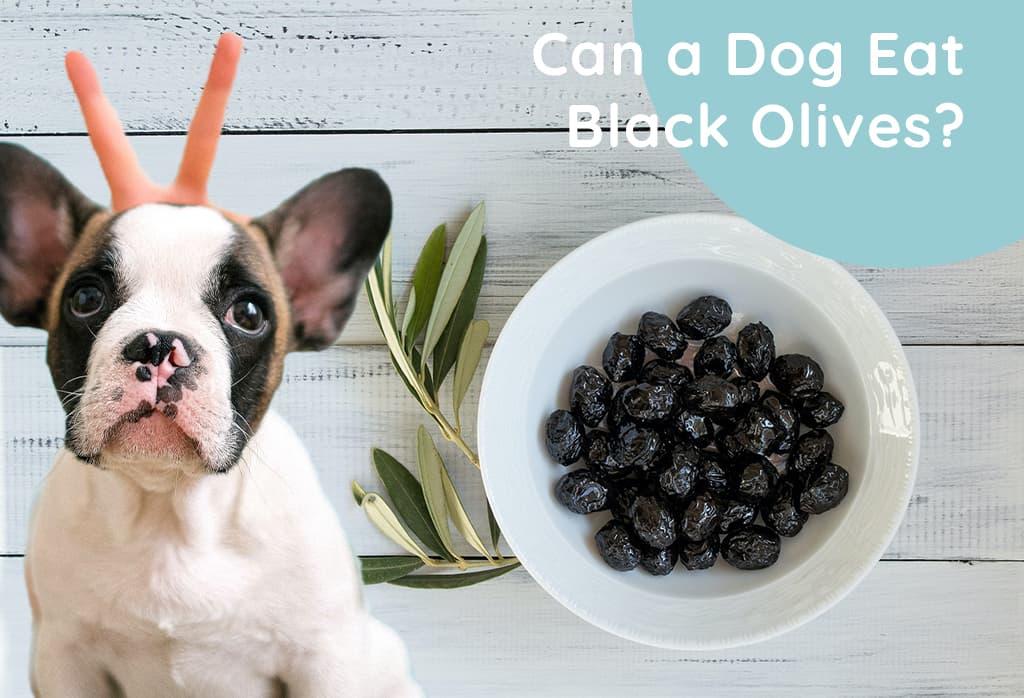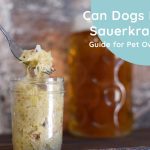We’ve all been there, right? You’re enjoying a snack, and your furry friend gives you those adorable puppy-dog eyes, begging for a taste.
But is it safe to share? In this article, we’re diving into the world of black olives and whether they’re a safe treat for our canine companions.
And don’t worry, I’ve got the scoop from a real expert, Dr. Whitney Miller, a top-notch veterinarian.
So let’s get started!
Can a Dog Eat Black Olives?
Alright, let’s cut to the chase.
The answer to the question: “Can a dog eat black olives?” According to Dr. Miller, the short answer is yes, but with a pretty big asterisk.
Your dog can eat black olives, but only if they’re plain, unsalted, and pitted.
And even then, it’s all about moderation, folks.
In other words, don’t go making olives a regular part of your pup’s diet without checking with your vet first.
The Risks of Feeding Olives to Dogs
Now that we’ve answered the main question let’s dig into the risks that come with giving olives to our four-legged friends.
Olive Pit Dangers
First up, olive pits.
Sure, they’re small, but they can pack a punch! Olive pits can damage your dog’s teeth and even pose a choking hazard.
So if you’re considering sharing an olive or two, make sure they’re pitted first.
Stuffed and Marinated Olives
Next on the danger list: stuffed and marinated olives.
I mean, who doesn’t love a fancy olive stuffed with cheese or something else yummy? But when it comes to our canine pals, these tasty treats can lead to some serious tummy troubles.
Plus, some olives are stuffed or packaged with onions and garlic, which are major no-nos for dogs.
So, save those fancy olives for yourself and stick to the plain ones for Fido.
Salt Toxicity in Dogs
Finally, we need to talk about salt.
Olives are often brined, which means they’re pretty high in salt content.
Too much salt can be toxic to dogs, causing symptoms like vomiting, diarrhea, dizziness, and even seizures.
If your pup starts showing any of these signs after eating something salty, it’s time to call the vet ASAP.
Types of Olives and Their Safety for Dogs
Now that we’ve covered the risks, let’s chat about which types of olives are the least problematic for our pups.
Kalamata, Green, and Black Olives
If you’re going to give your dog an olive, stick to the basics: Kalamata, green, or black olives.
As long as they’re pitted, plain, and unsalted, Dr. Miller says they’re generally okay in moderation.
But remember, it’s not a green light to make olives a staple in your dog’s diet.
Marinated Olives
As for marinated olives, Dr. Miller’s advice is simple: don’t do it.
These bad boys are full of salt, oils, and seasonings that can do a number on your dog’s digestive system.
So keep those marinated olives all to yourself.
Olive Oil
And what about olive oil? While it’s not exactly toxic for healthy dogs, it’s best to avoid giving your pup oils, butter, and seasoning unless your vet says it’s okay.
For dogs with health issues like inflammatory bowel disease or pancreatitis, olive oil can have some pretty serious consequences.
Plus, it can contribute to unhealthy weight gain.
So, when in doubt, consult your vet before drizzling that liquid gold on your dog’s food.
Health Benefits of Olives for Dogs
I know we’ve talked a lot about the risks, but let’s give olives their due.
They do have some health benefits, like vitamins, nutrients, fatty acids, and antioxidants.
So, while they’re not the perfect treat, they can be a nice little bonus for your dog every once in a while, as long as they’re plain, pitted, and unsalted.
But again, check with your vet before making any big changes to your dog’s diet.
How many olives can my dog eat?
So, you’re probably wondering, “How many olives can my dog eat?” Well, let’s break it down.
Portion sizes for dogs can vary depending on their size, age, and activity level.
Just like with people, bigger dogs usually need more food, while smaller dogs need less.
So, when it comes to olives, think small portions, even for big pups.
There are a few factors to consider when deciding how many olives to give your dog, including their weight, overall health, and any existing health conditions.
If your dog has a sensitive stomach or a history of health issues, it’s best to consult with your vet before introducing any new treats, olives included.
As a general rule of thumb, only give your dog a couple of olives at a time, and never more than a few per week.
Remember, moderation is key! And always make sure the olives are plain, pitted, and unsalted.
If you’re unsure about whether olives are a suitable treat for your dog, have a chat with your vet.
Can Dogs Eat Olives from a Jar with Brine?
Let’s move on to another common question: “Can dogs eat olives from a jar with brine?” Here’s the lowdown.
Brine is a solution made from water, salt, and sometimes additional flavorings.
It’s used to preserve and flavor olives, giving them that classic tangy taste.
But while brine might be yummy for us, it’s not so great for our canine buddies.
The main issue with brined olives is their high salt content.
Too much salt can lead to salt toxicity in dogs, causing symptoms like vomiting, diarrhea, dizziness, and even seizures.
So, to keep your dog safe, it’s best to avoid feeding them olives from a jar with brine.
If you want to give your dog an olive treat, opt for plain, pitted, and unsalted olives instead.
And, as always, remember that moderation is key.
Can Dogs Eat Olives from The Tree?
Fresh olives are packed with vitamins, nutrients, fatty acids, and antioxidants.
They’re a healthy treat for humans, but what about our four-legged friends?
Dogs can eat fresh olives from the tree, as long as they’re plain and pitted.
Just like with other types of olives, it’s important to remove the pit to prevent choking hazards and potential tooth damage.
And, of course, moderation is crucial!
While fresh olives do offer some health benefits for dogs, like vitamins and nutrients, it’s essential to be aware of the potential risks we’ve already discussed, like choking hazards and salt toxicity.
As long as you stick to plain, pitted, and unsalted olives in moderation, your dog can enjoy the occasional olive treat.
Alternative Treats for Dogs
If you’re looking for safer and healthier treat options for your canine buddy, there are plenty of dog-specific treats out there that are made with their well-being in mind.
It’s always a good idea to chat with your vet for recommendations, because they know your dog’s specific needs and can steer you in the right direction.
Preventing Accidental Consumption of Unsafe Foods
Now that we’ve covered the ins and outs of olives and dogs, let’s talk about keeping our pups safe from other potential food hazards.
Here are some tips for preventing accidental consumption of unsafe foods:
Keep human food out of reach: Store food items in cupboards, on high shelves, or in the fridge to make it harder for your dog to snag a snack.
Use pet-proof trash cans: Dogs can be crafty, so investing in a pet-proof trash can will help keep them out of the garbage.
Train your dog: Teach your dog basic commands like “leave it” to help them resist the temptation to sample human food.
Frequently Asked Questions
Can dogs eat green olives?
Yes, as long as they’re pitted, plain, and unsalted, but only in moderation.
What should I do if my dog ate an olive with a pit?
Keep an eye on your dog for any signs of distress and call your vet if you’re concerned.
Are there any health benefits of olives for dogs?
Olives contain vitamins, nutrients, fatty acids, and antioxidants, but they should only be given in moderation and with your vet’s approval.
How can I safely give olives to my dog?
Choose plain, unsalted, pitted olives and give them in moderation, always checking with your vet first.
What other human foods should I avoid giving to my dog?
Some foods to avoid include chocolate, grapes, raisins, onions, garlic, and foods high in salt or fat.
Always consult your vet for a full list.
Conclusion
So there you have it, a comprehensive guide to the world of dogs and black olives.
While they can be a safe treat in moderation, it’s important to be aware of the risks and consult with your veterinarian before adding them to your dog’s diet.
As always, responsible pet ownership is key to keeping our furry friends happy and healthy.
So, enjoy your olives, and maybe toss a plain one to your pup now and then – just don’t go overboard!











